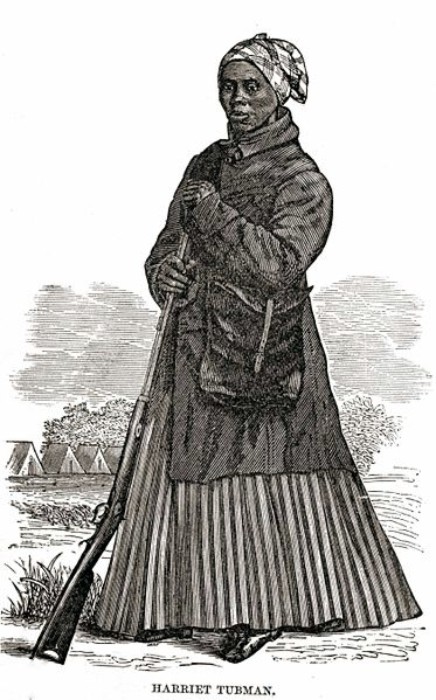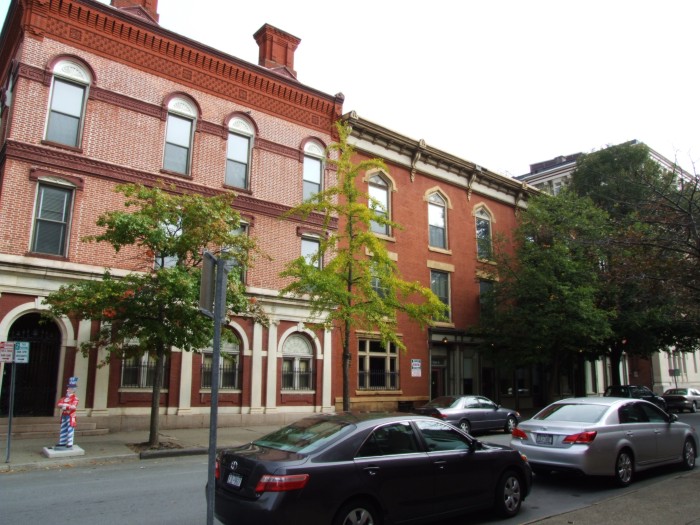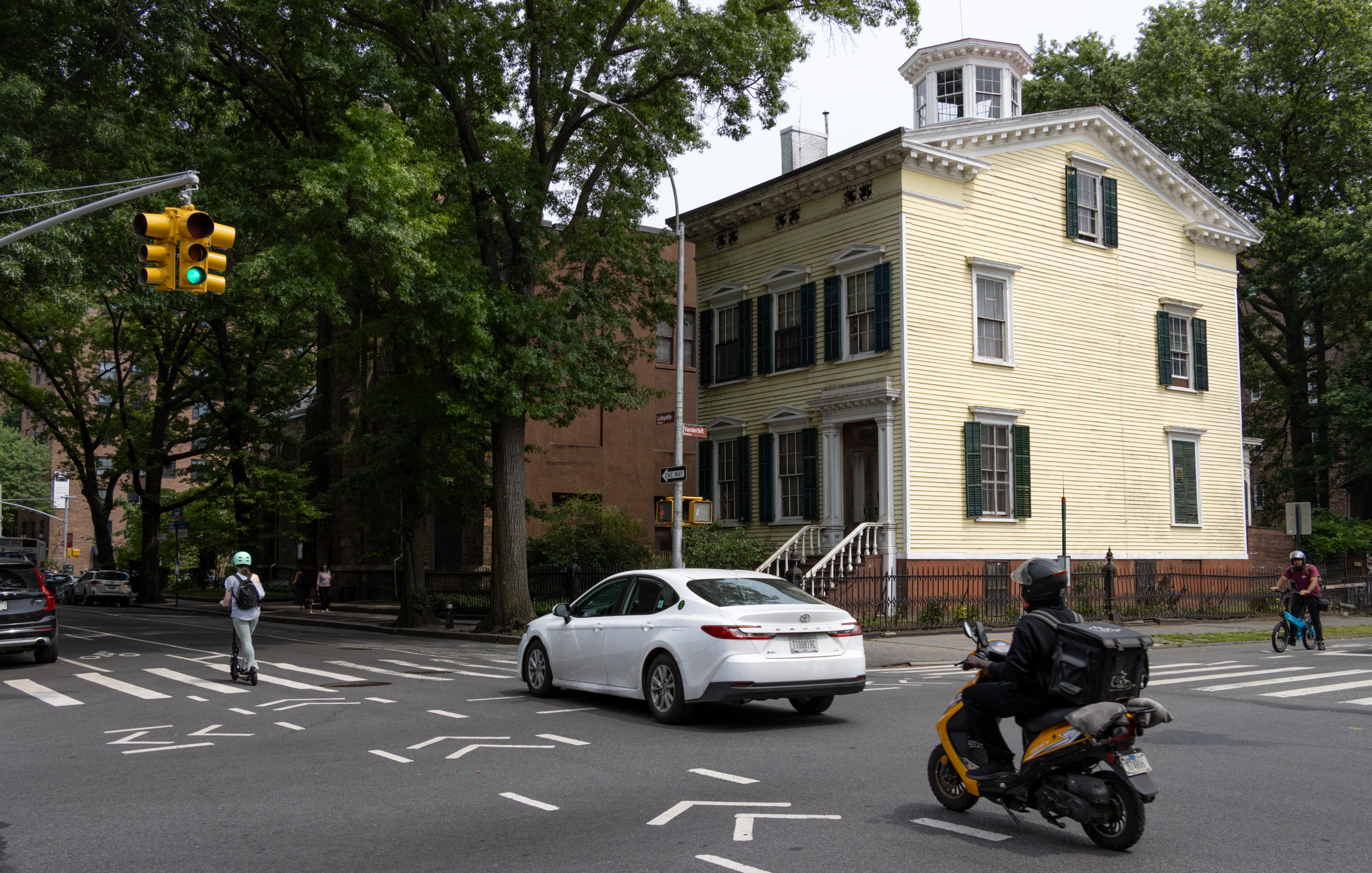Walkabout: The Rescue of Charles Nalle – A Troy Story, Part 2
Read Part 1 and Part 3 of this story. The great Harriet Tubman was a tiny little woman, with strong African features, no taller than five feet. But she was as tough as nails, and as fast and resourceful as a ninja. Over the years between 1849 and the dawn of the Civil War, she singlehandedly…


Read Part 1 and Part 3 of this story.
The great Harriet Tubman was a tiny little woman, with strong African features, no taller than five feet. But she was as tough as nails, and as fast and resourceful as a ninja.
Over the years between 1849 and the dawn of the Civil War, she singlehandedly traveled back and forth from the plantations of the South to the Canadian border more than 19 times, leading captives out of slavery.
Over 300 people directly owed their freedom to her, and she faced capture and certain death every day as they traveled north along the Underground Railroad. Her own family members were among the first people she shepherded to freedom, and some of them settled in upstate New York, in Auburn, and in the Capital region.
Part of Harriet Tubman’s success lay in the fact that most people didn’t believe that this diminutive black woman could possibly be the scourge of plantation owners everywhere. They didn’t know what she looked like, and they never caught her, or came close to finding out her identity.
For those she helped to freedom, and those who helped her as operatives on the Underground Railroad, and supported her financially and in spirit, she was simply called “Moses.”
In the spring of 1860, she was slated to speak at an anti-slavery rally in Boston. She was traveling east from Auburn, so when she reached the Albany area, she decided to take some time to visit a cousin in Troy. The entire Capital District was a hotbed of abolitionist activity, and many of the area’s citizens were conductors on the Underground Railroad.
Troy had a great number of people sympathetic to the anti-slavery cause, and the prosperous city had a small black community that included successful store and small business owners, outspoken ministers, and others, who with many of the city’s leading white citizens, were members of abolitionist groups. Harriet Tubman was right at home in Troy.
So was another man, one we met in the first chapter of this story, where greater detail can be found. Charles Nalle had escaped from bondage at the hands of the Hansbrough family, in Culpeper, Virginia.
His father was the wealthy planter, Peter Hansbrough, and his mother was a light-skinned slave woman named Lucy. According to all accounts, Charles Nalle looked as white as the next white man, but his black blood had condemned him to a life of slavery.
He had grown up playing with his half-brother, Blucher, although those filial ties were never spoken of, but had none of the young master’s advantages, not even the ability to read or write.
Reaching adulthood, he was coachman and driver for the family, and had been allowed to marry a woman named Kitty who lived on a different plantation, and they had several children.
By 1858, Kitty had been freed according to her owner’s last will and testament, and had to move to Washington DC, as free blacks were not allowed to live in Virginia. Nalle was allowed to visit occasionally, and on one of those visits, decided to make a run for freedom.
With the help of abolitionists in the city, he moved along the Underground Railroad, first to Philadelphia, and then he headed north towards Canada. By the time he reached the Capital District, he decided to stay, figuring he was safe.
He ended up in Troy, and got a job as a coachman with Uri Gilbert, one of Troy’s leading industrialists. But he naively trusted a disgraced lawyer named Horace Averill, who had agreed to write letters for him, but secretly wrote a letter to Blucher Hansbrough, as well, telling him where Charles was.
The slave catchers were dispatched to Troy, and Hansbrough himself got on a train, eager to reclaim his property.
Charles Nalle was arrested on the streets of Troy on April 27, 1860, and brought before the U.S. Commissioner, who released him to his vindictive half-brother and his slave-catching agent.
The slave catcher had fastened heavy manacles to Charles’ wrists, and planned on leading him out into the street, with Averill and Hansbrough right behind him.
They intended to get in a wagon which would take them to the train, and back to Virginia. Averill was looking forward to claiming the reward from a grateful Hansbrough.
But unknown to the men, word of Charles’ capture had spread throughout Troy. Members of the Vigilance Committee, an abolitionist group with both black and white members, had quickly gathered up a sizable crowd.
Troy did not like slavery, or those that practiced it; John Brown had been very well received here, and contempt for the Fugitive Slave Act was strong. People had also gotten to know and like Charles Nalle, and they were not going to simply allow him to be taken away.
As the crowd outside of the Commissioner’s office grew, they had an unexpected and powerful ally in their midst. “Moses” was in the crowd, and she and the Vigilance Committee had a plan.
Martin I. Townsend, a prominent Troy attorney, had tried to get Nalle released, but the legal system was stacked against him. He left the U.S. Commissioner’s office, on the corner of State and First Street, and made his way through the growing crowd, on his way to obtain a writ of habeas corpus, which would stay the case, and prevent Hansbrough and his captive from leaving Troy.
According to the Troy Times’ account of the story, published the day after the event, the police were afraid to bring Charles down, as it seemed all of Troy was in the street.
While they waited upstairs, devising an exit plan, the Commissioner allowed several black townsmen into the office, one at a time, to speak to Charles. A tiny elderly black woman in a large sunbonnet also pushed her way upstairs.
The officers thought she was a relative, and let her stay. It was Harriet Tubman, who was not as old or infirm as she pretended to be. Across the street, members of the Vigilance Committee watched from an upper window. As long as they could see Harriet’s bright bonnet, through the hallway windows, they knew Charles was still in the office upstairs.
The group stayed in the room for so long that some were beginning to think that Nalle had been taken out by another exit, but Harriet’s bonnet was still visible. According to the Troy Times, at one point, Nalle had been seated by a window.
When no one was watching, he managed to throw open the sash with his elbow, and tried to climb out of the window. The crowd went wild with encouragement, but his heavy manacles hindered him, and he was dragged back into the room.
According to another account, offers were made to buy Charles from Hansbrough, who initially agreed to $1,000, and when that was matched, upped it to $1,500. Someone in the crowd yelled, “Two hundred dollars for his rescue, not a cent to his master!”
The crowd roared its approval. It was now getting late into the afternoon. At 4 pm, attorney Townsend returned with his writ, which demanded that the city marshal bring Nalle before Judge Gould immediately. Whether they wanted to or not, the parties involved had to go down into the street and face the crowd.
Deputies were dispatched to make a path. As they went down the stairs, one deputy tried to move the aged Harriet out of the way, even offering to help her downstairs, if she was unable to do so herself, but feigning decrepitude, she just shrugged off the help, made herself smaller, and stood her ground.
The deputy moved on, coming out into the street to clear a path through the crowd, which was now ready for something to happen. The marshal, two deputies, Averill, the slave catcher Wall, Hansbrough and Charles Nalle came down the stairs.
No sooner had they passed, Harriet threw off her decrepitude, rushed to the window, and shouted, “Here they come,” to the Vigilance Committee watching for her signal across the street. The party came out of the door.
Charles Nalle stood before Troy, according to the papers, a tall handsome white man, weighed down by the heavy chains on his wrists, surrounded by two deputies. His master and half-brother Blucher Hansbrough was right behind him, the resemblance so strong, it was hard to tell them apart.
The crowd, made up of Trojans, black and white, surged towards the group. Harriet Tubman ran out of the building, pushed one of the deputies aside and wrapped her arms around Charles Nalle’s chained hands, refusing to let go.
They were both knocked down, and the mob surged around them, pushing and fighting with the deputies, Wall and Hansbrough. While they were down, surrounded by her people, Harriet took off the bonnet and tied it on Charles’ head.
Not everyone in the crowd was set on freeing Charles Nalle. There was also a contingent that had pro-slavery sympathies, or perhaps just liked a good fight, because the scene began to grow more violent, with fights breaking out throughout the crowd.
The combatants surrounded Nalle and Harriet, who had still not let go of him. They rose, and with his face covered, Nalle was invisible, so the master now became the slave, as Hansbrough was mistaken for Nalle, and both parties struggled around them all.
Charles and Harriet were knocked down again. Charles was cut and bleeding heavily from the manacles, and Harriet, who never let go of him, had her coat torn from her, and they had even torn off her heavy boots in the melee.
The Troy Times reported that Harriet shouted “Give me liberty or give me death,” which encouraged the mob even more. The chaos was such that over two thousand people, according to the paper, were in the streets, many of them fighting, many more intent on getting Charles Nalle out of there.
The deputies had lost Nalle, as he was torn from their grasp. As they struggled to find them, Harriet and the Vigilance Committee managed to spirit Nalle from State Street, through the crowds, down to the Hudson, a distance of several blocks.
He was supposed to get into a rowboat commandeered for the occasion, but when the rower saw the crowd surging towards the river, he panicked and ran. Nalle made a mad dash for the ferry and jumped on board. The boat would take him across the river to West Troy, which today is the town of Watervliet.
As fast as all of this was, the telegraph was still faster. Warned that the fugitive was coming across the river, the police were ready in Watervliet. Charles Nalle ran from the ferry, a man still in chains, bleeding and battered, found running up the street away from the river.
Harriet had not been able to get on the ferry, but was on the one right behind it, but by the time she and her followers got to Watervliet, perhaps only twenty minutes behind Charles, he had been taken. Would this be the end of the attempt to free Charles Nalle? Not if Harriet Tubman had anything to say about it, it wouldn’t.
This story just could not be told in two episodes. Charles Nalle’s fate, and the fate of the other major players in this story will conclude this tale, next time. The woodcut above depicts Harriet Tubman during the Civil War. Source: Wikipedia.
The rescue of Charles Nalle is a part of Troy and Waterviet history. The local newspaper, the Troy Times, carried an eyewitness account, which was picked up by other papers. Years later, the story was told again and again, in Troy, and in Auburn, the home of Harriet Tubman. All three cities are very proud of what occurred on and around April 27, 1860. My research for this story comes from the Troy Times, the Auburn Citizen, and information gathered on various websites, much of which is gleaned from the scholarship of Scott Christianson, the author of a very highly researched and detailed book on the subject called “Freeing Charles: The Struggle to Free a Slave on the Eve of the Civil War.” He contacted me when part one of this story published on Tuesday. He corrected an error I had made in identifying the Gilbert House, and was encouraging and a nice guy on top of it all. Thank you, Mr. Christianson for your research, and I hope you’ll sign a copy of your book after I get it!






What's Your Take? Leave a Comment